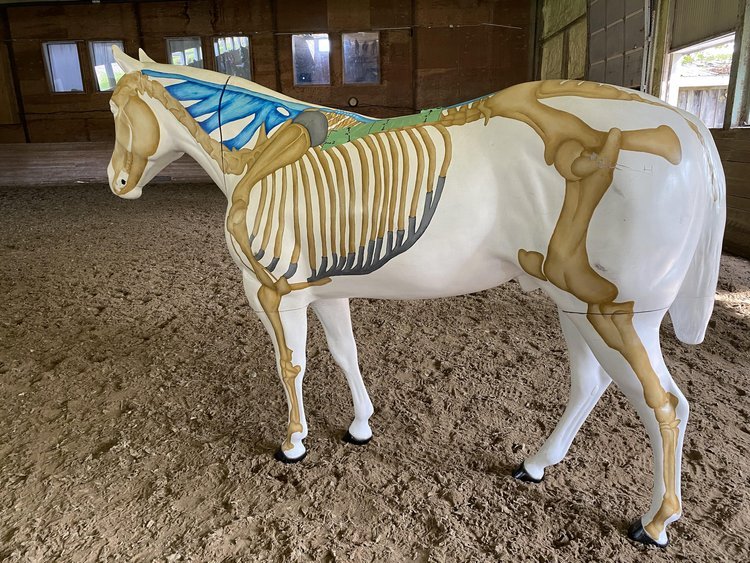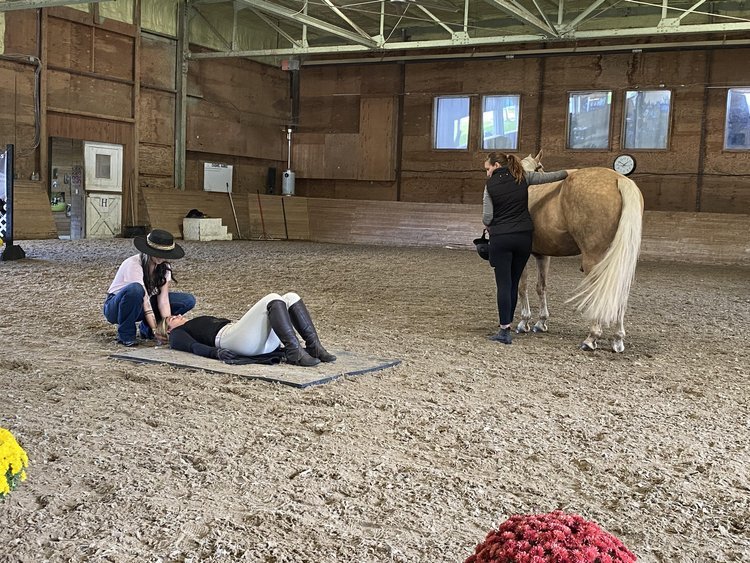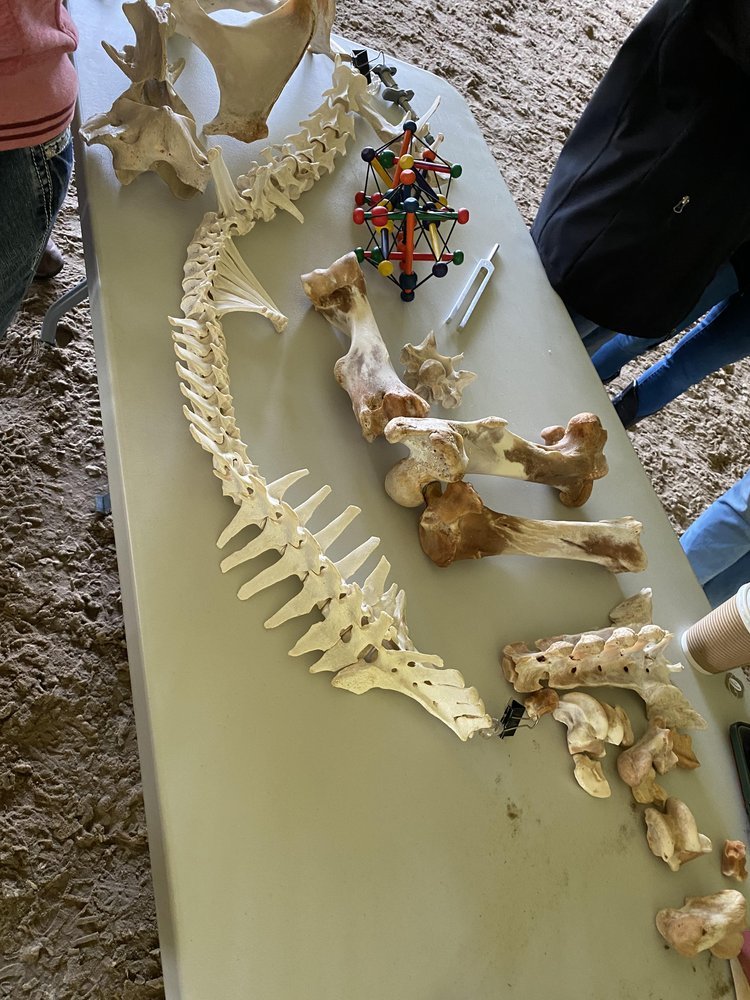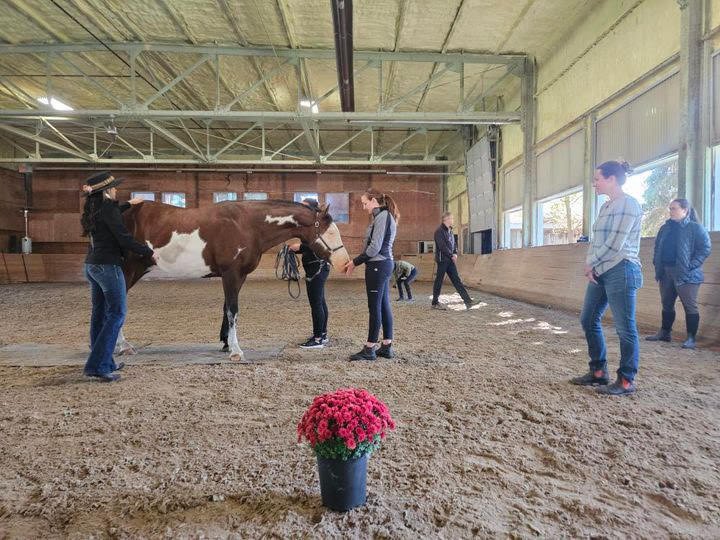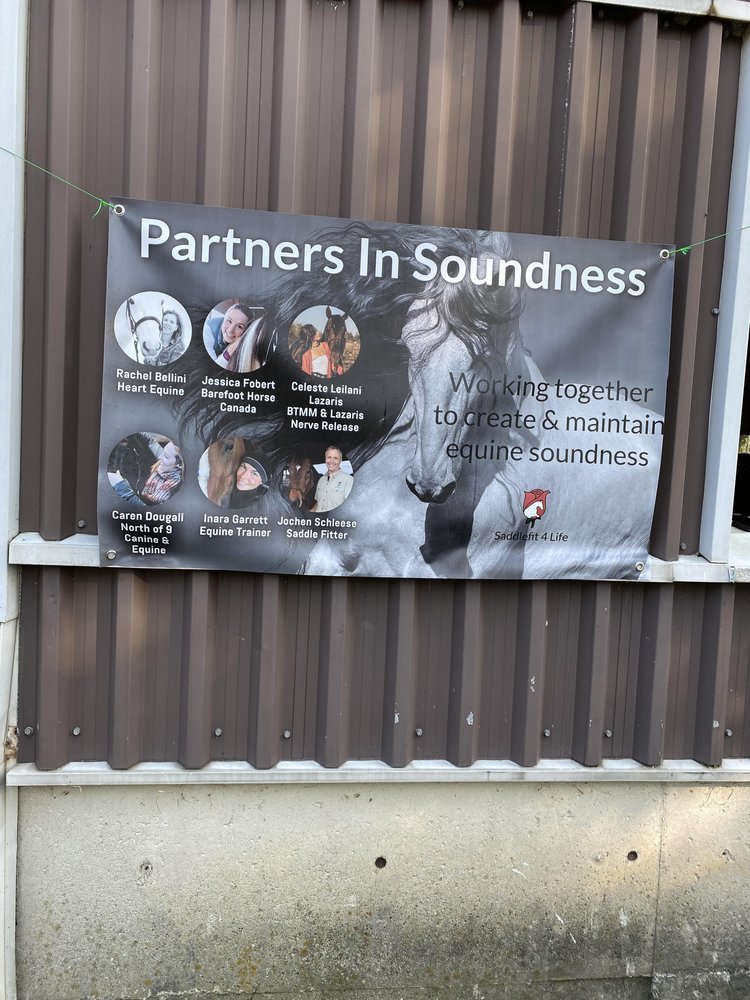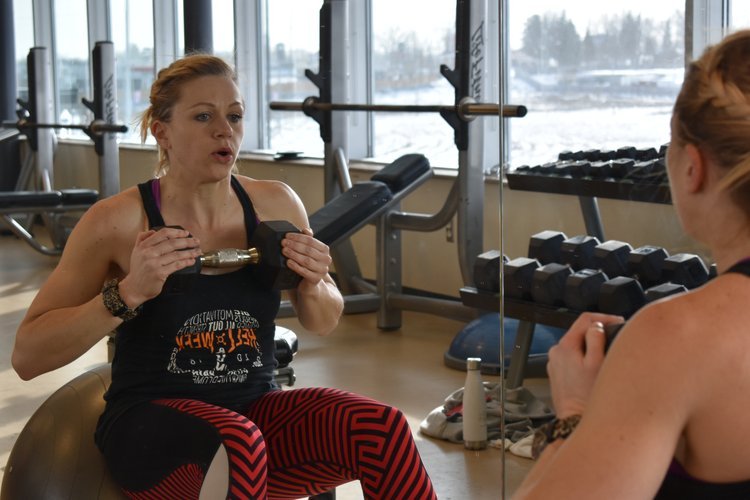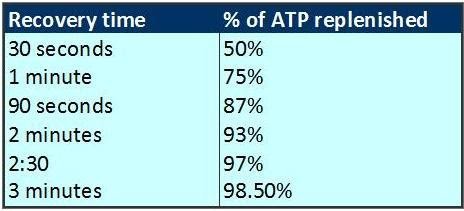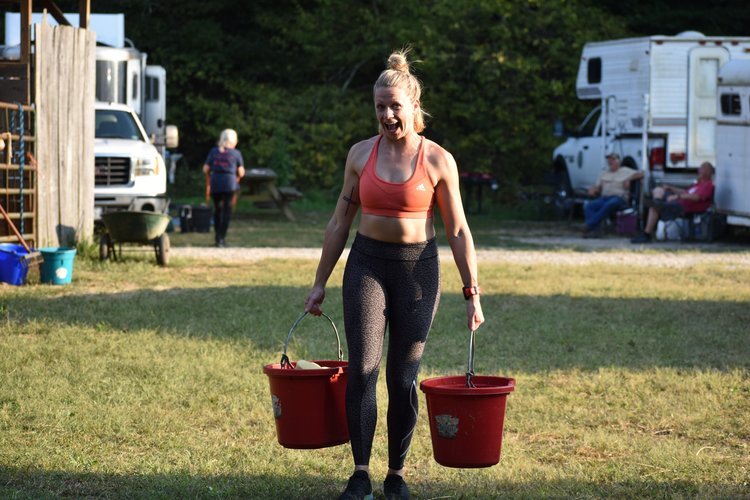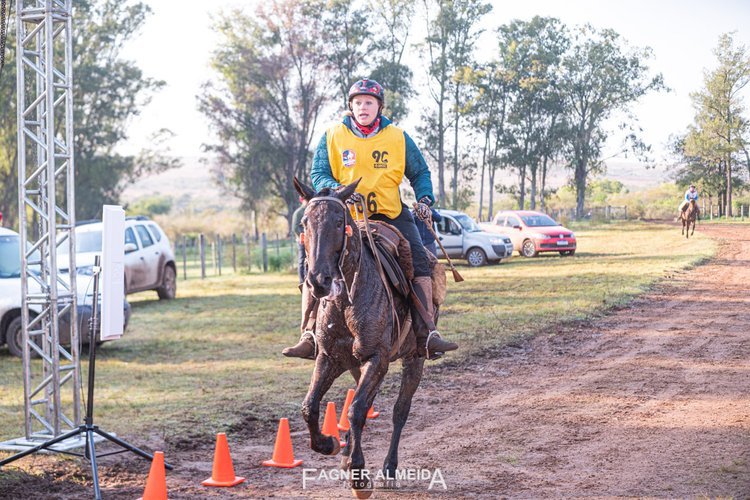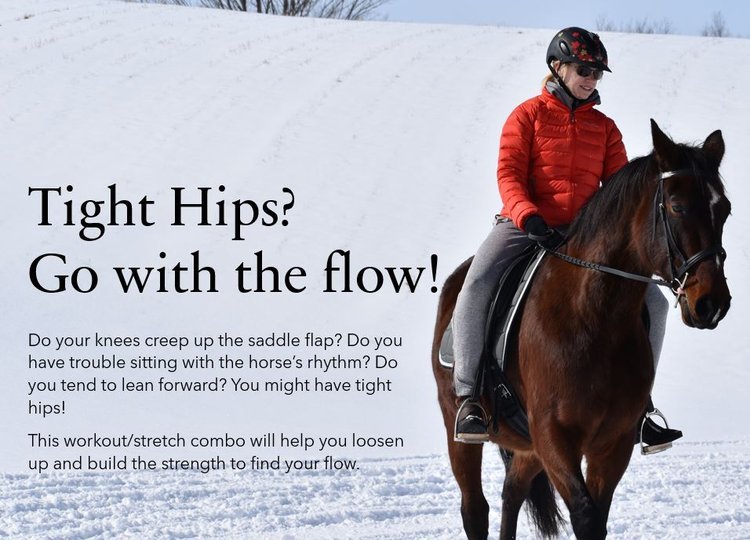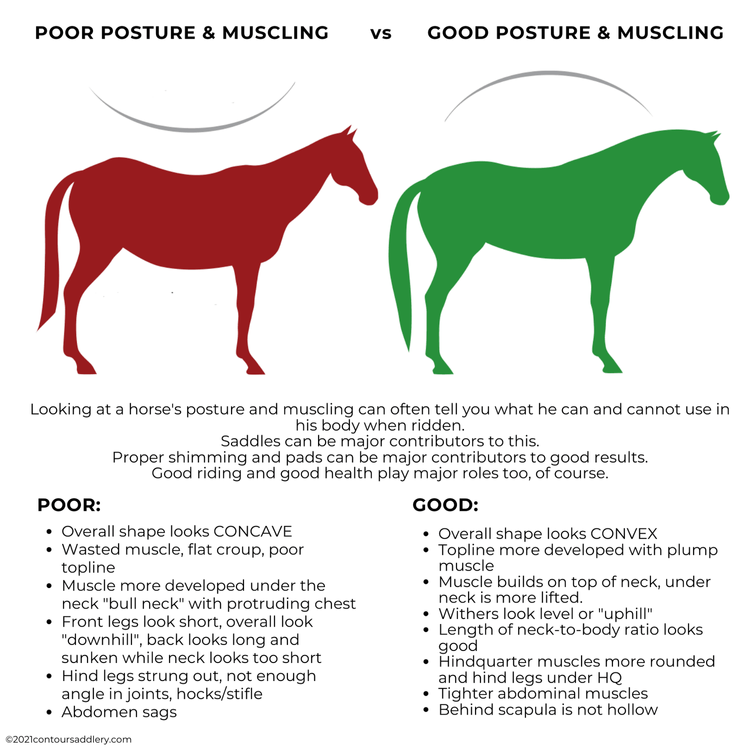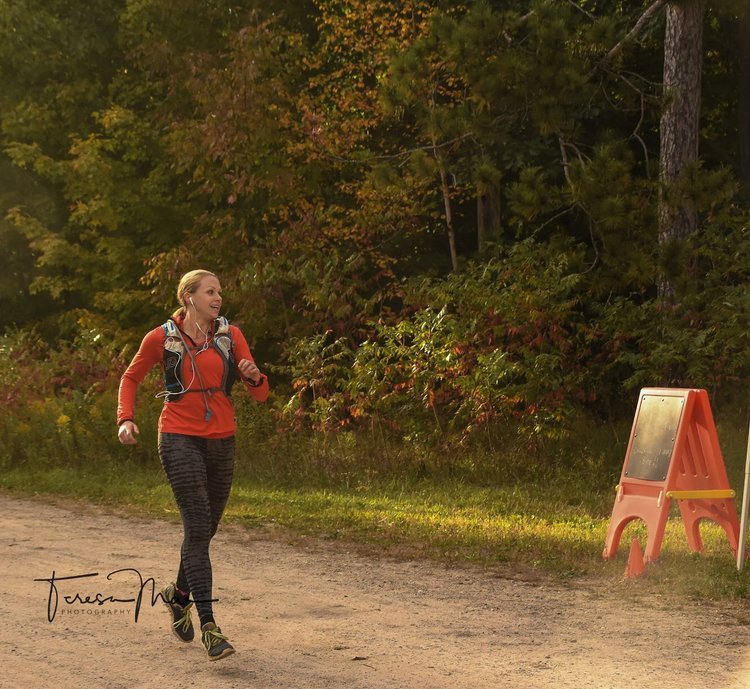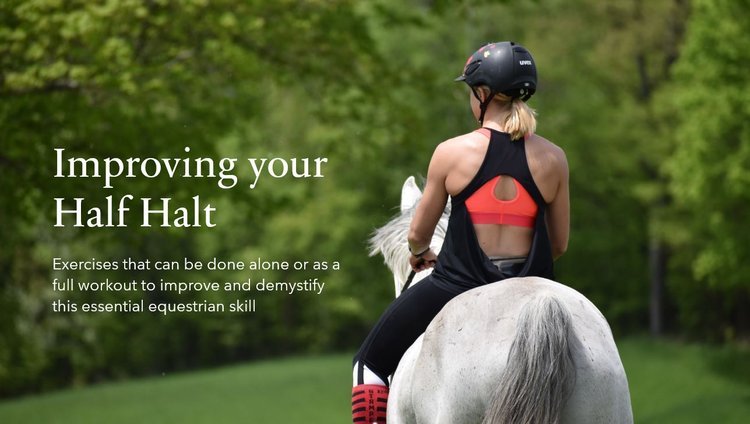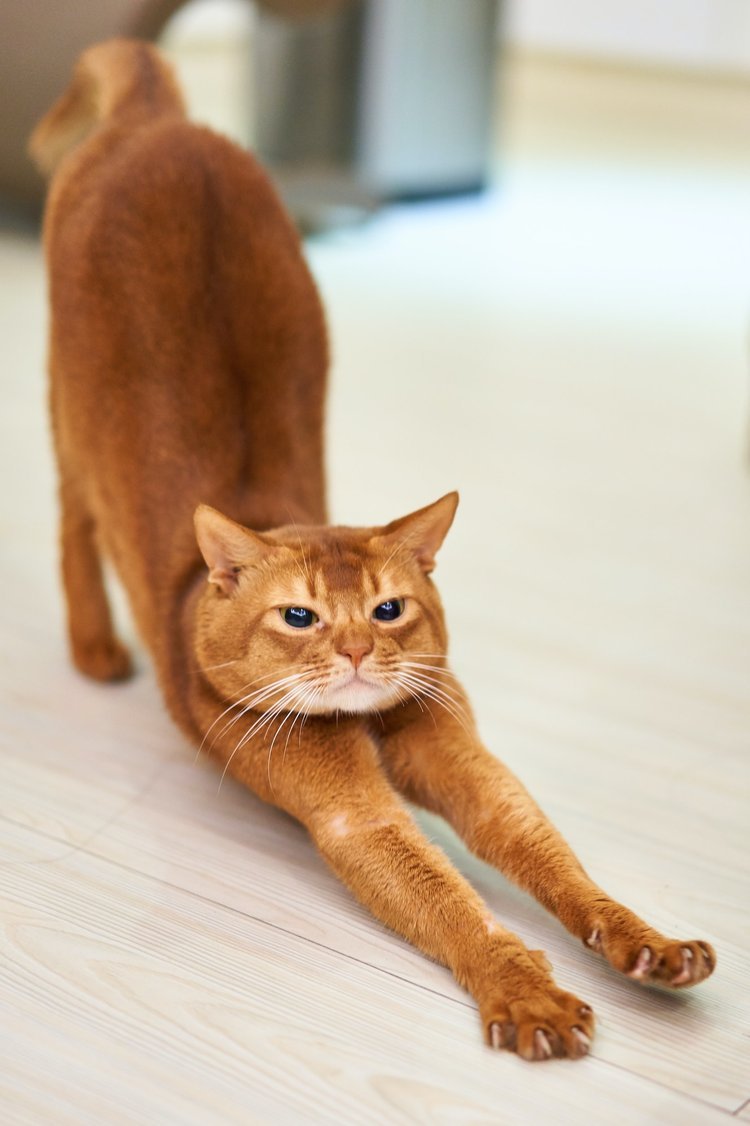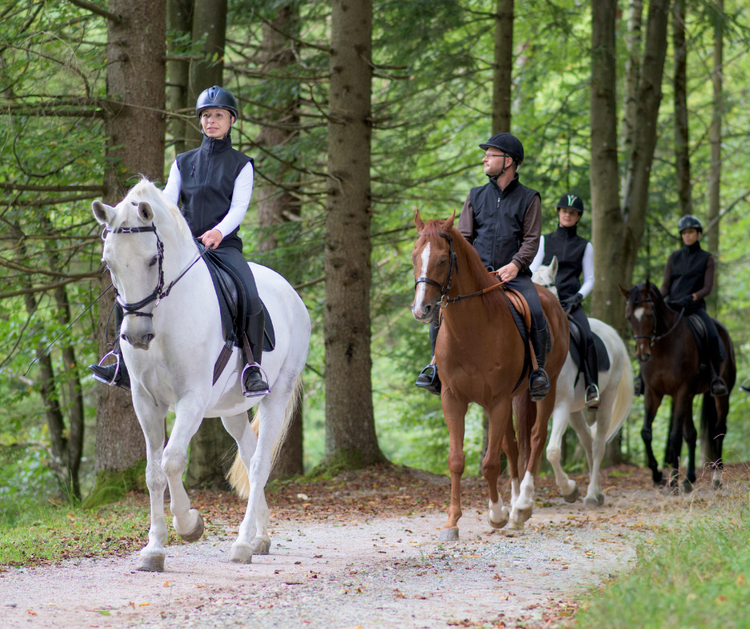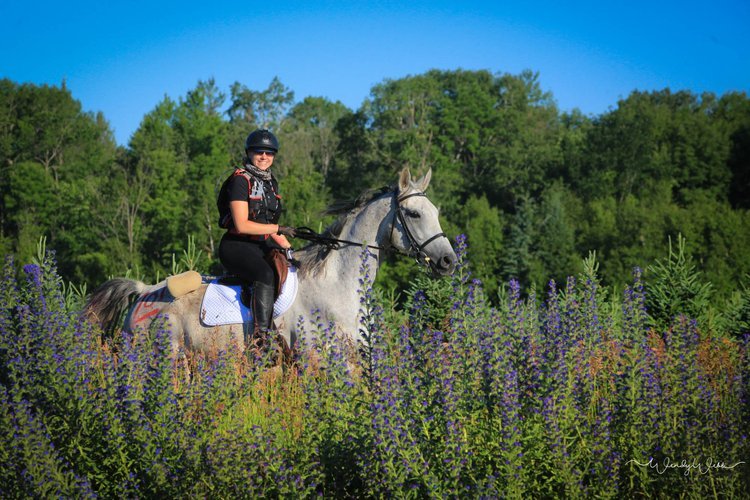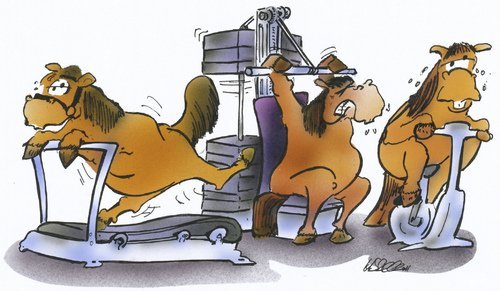Partners in Soundness
I spent the past weekend at the Partners in Soundness clinic at the beautiful Cashel Farms in Stouffville, Ontario. It was beautiful to be a part of a gathering of like minded professionals and horse owners all working together for a common cause: soundness. Day 1 was listening to each clinician present their area of expertise and what it is they do and Day 2 was seeing this in action as multiple horses were assessed and participants could see how the group collaboration worked.
It takes a team to help keep a horse happy and sound and this workshop drove that message home. The clinicians consisted of a trainer, farrier/barefoot trimmer, bodyworker, saddle fitter, an equine biomechanics/movement specialist and a vet who practices chiropractic and acupuncture and even though they were looking at the horses through their own unique lens, it was fascinating to see them all come to the same conclusions.
Everything works together. Hoof imbalances can cause imbalance elsewhere in the body, affecting saddle fit, how the rider sits (and the rider’s body), and body asymmetry and imbalance (in both horse and rider) can affect the hooves, how the saddle fits and moves, how the horse moves, etc. Everything is so interconnected. This is also where the reoccurring theme of “treat vs heal” kept coming up in every discussion and every horse assessment. Do we want to just treat the issue/symptom or do we want to heal the body? Treating may have quicker results and relieve symptoms but they are not always long lasting because whatever factors caused the issue in the first place may still be there. By taking the time to heal the body, we are setting our horses up for long term success and healthiness.
How can we do that? We can start by paying attention to the subtle signs that our horse is experiencing discomfort. Swishing the tail while being groomed, walking away or pinning the ears when the saddle goes on, being less responsive to our aids, not wanting to be caught. We often say we wish horses could talk and tell us what is wrong but they are trying, we just aren’t always paying that close of attention.
Rider fitness plays a huge role in this as well. We expect our horses to be athletes and we should expect the same of ourselves. Fueling our body with the best nutrition we can, increasing our strength and balance so we can be of as little of a hindrance as possible when we are on their backs, getting bodywork done on ourselves to ensure we are as balanced as we can be.
There is no one size fits all solution for each horse and rider as every body is different but doing what we can to be our best selves and helping our horses be their best selves will help minimize injury in our bodies and our horse’s bodies and keep us happy and healthy for longer.
Ride Like An Athlete is here to help you with that. Book your consult with Coach Sarah to help identify and work through rider fitness challenges and collaborate with her network of professionals to help the rider. I am always available for conversations around horse fitness and bodywork and have my network of professionals as a resource to help you help your horse be their best self. Send us an email at ridelikeanathlete@gmail today with any of your questions or concerns and we are happy to help you wherever you may be on your rider or horse fitness journey.
Cheers!
Ashley
Horsin' Around with Visualization: Your Ticket to Equestrian Success
As equestrian athletes, we're constantly striving for that extra edge in our training to enhance our performance in the arena or on the course.
Naturally, much of our efforts to improve focus on the physical aspects – strengthening our connection with our equine partners, refining our riding technique, and enhancing our overall horsemanship.
Enhancements in these areas are pivotal for achieving better results in competitions and should remain the core of your training regimen.
However, if you've already reached your physical peak, consider adding mental preparation and visualization techniques to your training routine. These techniques can help you squeeze out that extra one or two percent on competition day.
Today, we'll explore how you can harness the power of mental imagery and visualization in your equestrian journey!
Some of the world's top equestrians, from dressage champions to show jumping maestros, incorporate mental imagery and visualization into their training routines.
Mental training and visualization clearly work for high-caliber equestrians. Here are some tailored visualization and mental planning tips and strategies you can integrate to elevate your performance:
In Training:
Be Horse-Specific: When visualizing your ride, be as horse-specific as possible. Imagine yourself in the saddle, feel the rhythm of your horse's movements, and visualize the course. The more vivid and specific, the more prepared you'll be for the real event.
Embrace Challenges: Visualize not only your flawless rides but also scenarios where things may not go as planned. What if your horse spooks or hesitates at a jump? Preparing for challenges mentally will help you respond confidently when they occur.
Boost Your Confidence: Incorporate self-affirmation and self-talk into your daily routine. Spend time visualizing your successful rides and affirming your abilities. Phrases like "I am in harmony with my horse, I am focused, I am a champion" can boost your confidence and mental resilience.
Before the Competition:
Recall Triumphs: If pre-competition nerves set in, recall your past triumphs and successful rides. Relive the moments when you and your horse performed flawlessly, filling yourself with positive energy and confidence.
Focus on the Controllable: Redirect your thoughts from uncontrollable factors (competition outcomes, weather) to aspects you can control. Visualize your pre-competition routine, your horse's behavior, and your own composure to ease nerves and enhance your chances of success.
During the Competition:
Stay Positive with Mantras: Create positive mantras to repeat during your ride, helping you stay focused and determined. For instance, "My horse and I are a team, we are unstoppable" fosters a positive mindset during challenging moments.
Use Mental Cues: Employ mental cues to maintain proper form and mindset during your ride. A simple cue like "relax and ride" can remind you to stay composed and relaxed, even when facing obstacles.
While no amount of mental imagery and visualization can replace rigorous physical and skills training, incorporating these techniques into your equestrian journey can elevate your performance to new heights. Whether you're competing in endurance, dressage, show jumping, or another discipline, the power of the mind can be a valuable ally on your path to equestrian excellence.
So saddle up, visualize your success, and ride towards victory!
Happy riding,
Sarah
PS If you're ready to fully commit to your equestrian training journey and experience the benefits of optimized recovery and enhanced performance, I invite you to explore my offerings at RideLikeAnAthlete.com. Whether you're looking for personalized training programs, expert guidance, or resources to take your riding to the next level, you'll find a range of options tailored to your needs. Together, let's ride towards excellence!
Maximizing Recovery and Performance in the Saddle: Insights for Equestrians
Welcome to our newsletter dedicated to enhancing your equestrian journey by optimizing recovery and performance. Just as every ride is unique, so is the approach to maintaining peak performance and swift recovery. In this edition, we'll delve into five common mistakes riders often make and how you can avoid them to ensure you're at your best every time you mount your trusty steed.
Mistake #1: Opting for Pain Relievers
Like many fellow equestrians, when faced with slight discomfort, muscle soreness, or inflamed joints from riding, you might have turned to non-steroidal anti-inflammatory drugs (NSAIDs), such as ibuprofen or Advil. However, new insights into inflammation reveal that these drugs might hinder the very gains you're striving for.
Previously, we believed that inflammation delayed recovery, pushing us to quickly eliminate it for healing. Yet, our understanding has evolved: inflammation is an essential step in the body's natural recovery process. Inflammation signals specific cells (leukocytes, monocytes, and macrophages) that aid muscle repair. While recovery is possible without inflammation, these cells hasten the process.
Furthermore, research shows that anti-inflammatory drugs can limit training adaptations. One study found that ibuprofen hindered skeletal muscle adaptations during endurance training. Another confirmed NSAIDs slowed healing of muscles, tissues, ligaments, and bones post-exercise.
The verdict is clear: using Advil or ibuprofen after riding may delay your recovery.
Mistake #2: Reconsidering Ice Baths
As we reconsider inflammation's role in recovery and training gains, let's reassess the use of ice baths in the equestrian context.
Like NSAIDs, ice baths aim to reduce inflammation after activity. However, recent insights indicate inflammation could actually support recovery and training adaptations, while dampening it might hinder fitness gains.
Elite athletes have shifted their approach to ice baths based on their training phase. During the adaptive phase, when pushing for maximum workout benefits, they skip ice baths. For everyday riders, this phase aligns with intensive training (post gradual build-up) before tapering or the final two weeks of preparation.
In the restorative phase, used closer to competition, ice baths are embraced. In the final training weeks, the goal isn't to enhance fitness but to feel fresh and strong.
Takeaway: Avoid ice baths after demanding workouts or daily. Reserve them for the last weeks of training before your event or during your multi-day event to ensure your body is primed and energized for the ride.
Mistake #3: Rethinking Antioxidants for Recovery
Athletes often use antioxidants like vitamin C to combat oxidative stress, believed to hinder recovery. However, our understanding of antioxidants' impact is shifting. Blocking all oxidative stress might impair training adaptations.
Oxidative stress is vital for cell development and function. In exercise, reactive oxygen species are part of the stress that drives improvement. Reducing this stress could hinder adaptation.
Vitamin C supplementation has been shown to prevent mitochondria formation, crucial for endurance performance.
While natural antioxidants from fruits and vegetables are still beneficial, post-ride antioxidant supplementation isn't recommended.
Mistake #4: Post-Ride Nutrition Matters
Providing your body with proper nutrients after a ride is crucial for muscle repair and recovery. Scientific studies have identified the optimal nutrient ratio for maximum recovery.
Aim for a 4-to-1 carbohydrate-to-protein ratio, meaning for every 4 grams of carbs, consume 1 gram of protein. Avoid excessive protein intake, as it can slow carbohydrate absorption and hinder recovery.
The ideal ratio aids gastric emptying, promoting recovery. Aim for around 250 to 400 calories in total.
Mistake #5: The Art of Strategic Stretching
In the realm of equestrian performance and recovery, the importance of stretching cannot be overstated. Stretching is not a one-size-fits-all concept; it's a multifaceted approach that deserves a closer look. As someone deeply invested in the world of equestrian training, I have observed the profound impact that targeted stretching can have on riders' performance and overall well-being. In fact, I've integrated a habit of daily stretching into the foundation of my personal training programs, and the results speak for themselves.
Stretching isn't just a post-ride ritual; it's a strategic tool that can guide you towards better recovery and enhanced riding. For my personal training clients, I emphasize dedicating just 15 minutes a day to stretching. This practice serves two invaluable purposes: not only does it accelerate the recovery process, but it also empowers riders to become intimately familiar with the stretches that work best for their unique needs.
By committing to a daily stretching routine, riders gradually build a repertoire of stretches that cater to their body's specific demands. This knowledge becomes indispensable when the demands of riding intensify or when certain muscles require targeted relief. Instead of a haphazard approach to stretching, riders armed with this insight can strategically choose stretches that address specific muscle groups or areas of discomfort.
But what types of stretching should you consider? The world of stretching is expansive, offering various techniques that complement equestrian training:
Dynamic Stretching: Think of dynamic stretching as a dynamic warm-up for your muscles. Incorporate active isolated stretches, mobility drills, and controlled movements that mimic riding actions. This prepares your body for the demands of the saddle, enhances flexibility, and promotes proper biomechanics.
Yoga and Flexibility Work: Yoga is an excellent avenue to explore for equestrians. It combines stretching with mindful breathing and balance, enhancing core strength and flexibility – both crucial aspects of effective riding. Poses like Downward Dog, Cobra, and Warrior II can work wonders.
Foam Rolling and Self-Myofascial Release: Just as your trusty steed benefits from a good massage, so does your body. Foam rolling aids in releasing tension, breaking up adhesions, and improving blood flow. Consider integrating foam rolling into your pre- and post-ride routine for optimal results.
Static Stretching: Contrary to popular belief, static stretching still holds value when performed correctly. Post-ride static stretches can aid muscle recovery, improve flexibility, and alleviate tightness. Target major muscle groups such as hips, quadriceps, hamstrings, and calves.
My philosophy of integrating a daily stretching habit into training programs extends from my genuine passion for enabling riders to thrive both on and off the saddle. As you delve into the world of strategic stretching, remember that every body is unique – what works for one rider may not be ideal for another. Embrace this journey of self-discovery and tailor your stretching routine to suit your individual needs.
In summary, don't view stretching as a mere afterthought; instead, see it as a personalized recovery and performance enhancement tool. By dedicating just 15 minutes a day, you're not only fostering faster recovery but also cultivating a deep understanding of your body's requirements. This knowledge will undoubtedly serve you well when the stakes are high, and your riding performance demands peak efficiency.
Stay tuned for more insights, tips, and guides on optimizing your equestrian journey through intelligent training strategies.
Happy riding,
Sarah
PS If you're ready to fully commit to your equestrian training journey and experience the benefits of optimized recovery and enhanced performance, I invite you to explore my offerings at RideLikeAnAthlete.com. Whether you're looking for personalized training programs, expert guidance, or resources to take your riding to the next level, you'll find a range of options tailored to your needs. Together, let's ride towards excellence!
Strength Training Truths for Riders: Debunking Myths for Equestrian Excellence
Just like most sports, equestrian athletes require a solid foundation of strength to excel in their sport. Yet, there are common misconceptions that can hinder their strength training progress. Let's explore these myths and set the record straight for equestrian athletes aiming to optimize their performance in the saddle.
Myth #1: Rest Periods Between Sets In the pursuit of enhancing equestrian performance, many riders may overlook the importance of adequate rest between strength training sets. While riders are accustomed to maintaining their balance and posture while riding, it's crucial to recognize that effective strength development demands a different approach.
Unlike the continuous demands of riding, strength training relies on the adenosine triphosphate phospho-creatine (ATP-PC) energy system. This system provides the energy required for powerful movements during strength exercises. Unlike riding, which engages aerobic energy systems, ATP-PC requires substantial recovery time—approximately two to three minutes—to reach optimal levels.
Equestrian athletes must resist the urge to rush between sets and allow their ATP system to fully recharge. Neglecting proper recovery time limits the recruitment of muscle fibers, resulting in a less effective training session. To build strength effectively, it's recommended to allocate at least two minutes of recovery time between each set when lifting heavy.
Myth #2: Repetition Ranges for Endurance Equestrian athletes often assume that high repetitions with low weights mirror the endurance required during prolonged riding sessions. However, this belief overlooks the nuances of effective strength training for riders.
Recent research has shown that repetitions in the range of 12-20 do not significantly improve muscular endurance compared to the 6-8 repetition range. Moreover, since riding already targets muscular endurance, the primary goal of strength training should be to enhance strength.
Instead of fixating on light weights and high repetitions, equestrian athletes should prioritize lifting the heaviest weight they can handle safely for 6-10 repetitions. This approach maximizes muscle overload and engages a greater number of muscle fibers, resulting in improved strength for riding.
Myth #3: Fear of Bulking Up Concerns about appearing overly muscular due to heavy lifting can deter equestrian athletes from embracing effective strength training practices. However, the notion that heavy weights alone lead to excessive muscle mass is rooted in misunderstanding.
Building significant muscle bulk involves more than lifting heavy weights—it's influenced by nutrition and caloric intake, and even more so your genetics. Equestrian athletes are unlikely to gain unwanted mass through strength training, considering the predominant time spent riding and the necessity for overconsumption of calories to induce substantial muscle growth.
Equestrian athletes need not fear resembling bodybuilders (unless you want to!). Incorporating heavy lifting into their training regimen won't lead to undesirable outcomes. Similarly, lifting lighter weights with higher repetitions does not guarantee a more "toned" appearance. The desired muscle definition results from maintaining muscle mass while losing weight.
Myth #4: Timing of Strength Training Aligning strength training with an equestrian athlete's riding regimen is crucial for optimal results. Strength training should not be treated as an isolated addition to riding but integrated into a comprehensive training plan.
Performing intensive strength workouts on recovery or off days can compromise recovery and hinder overall progress. Conversely, scheduling demanding strength training on riding workout days optimizes recovery time and prevents interference with riding performance.
Strategically integrating strength training based on its intensity and specificity is key:
Reserve the most demanding, riding-specific strength routines for after intense riding workouts.
Incorporate moderate-effort routines on regular riding days, focusing on core and hip exercises.
Dedicate off or recovery days to preventive routines (stretching, foam rolling).
Myth #5: Machine vs. Bodyweight and Free Weight Exercises The prevalence of strength training machines in gyms might suggest their efficacy, but equestrian athletes should be cautious about overreliance on them. While machines can appear convenient, they often fall short in effectively engaging relevant muscle groups and supporting functional movements.
For instance, hip strength is crucial for equestrian performance. To effectively target these muscles, exercises should prioritize gluteal activation while minimizing engagement of the tensor fasciae latae (TFL). Machines that isolate the TFL, such as the abductor machine, may prove ineffective or even counterproductive.
Instead of relying solely on machines, equestrian athletes should prioritize bodyweight, free weight, and miniband exercises that engage multiple muscle groups and promote functional strength. By understanding and dispelling these common myths, equestrian athletes can tailor their strength training to enhance their performance on horseback.
In the world of equestrian sports, debunking common strength training myths is pivotal to achieving peak performance. By dispelling misconceptions and embracing effective strategies, equestrian athletes can enhance their strength, balance, and coordination for an exceptional performance in the saddle. To further elevate your equestrian journey, consider exploring my fitness programs tailored specifically for riders at www.ridelikeanathlete.com. These programs are designed to help you optimize your strength and fitness, enabling you to ride like the athlete you aspire to be. Saddle up and embark on a journey of strength, precision, and success!
Best regards, Coach Sarah
A case for lifting heavy
Hey there, fellow Athletes!
I've got some game-changing workout tips to share that will not only supercharge your equestrian performance but also leave you feeling empowered and strong! Let's talk about those soft pink 2 lbs dumbbells that are often marketed to women. It's time to say goodbye to them and embrace a more effective approach to your fitness routine.
Tip 1: Embrace the Power of Heavy Weights As an equestrian, you already possess incredible strength from working with massive animals and handling daily barn tasks. But did you know that using heavy weights in your workouts can take your performance to new heights? Instead of sticking to lightweights, challenge yourself with "heavy weights" in the 10-20lb range for upper body exercises like bicep curls and overhead presses. For lower body exercises like deadlifts and squats, aim for weights ranging from 50-100lbs and beyond as you progress. You'll be amazed at the positive impact it has on your riding and overall fitness!
Tip 2: Unleash Your Potential - You Are Stronger Than You Think It's time to ditch the self-doubt and underestimate your abilities. As a certified personal trainer and fellow equestrian, I've seen remarkable transformations when riders believe in themselves. Those tiny pink dumbbells collecting dust? Let them go! Embrace your inner strength, both in the gym and the saddle. With the right mindset and guidance, you'll achieve greatness and discover a whole new level of confidence in your equestrian journey.
Tip 3: Get Creative with Your Workout Setup You don't need fancy gym equipment to get fit. In fact, you can create a powerful workout setup right at home using everyday items like water jugs, fly spray refill containers, or anything with a handle that you can grip. Think outside the box and incorporate these items into your training routine. Together, we'll design workouts that mimic barn chores and riding movements, making your fitness journey fun and functional!
Remember, it's not about comparing yourself to others or conforming to outdated fitness trends. It's about embracing your unique strengths and striving to be the best version of yourself. If you'd like more personalized guidance and support on your fitness journey, I'm here to help.
Feel free to reach out to me just by replying to this email if you have any questions or want to explore how we can work together to achieve your fitness goals. Let's unleash your inner athlete and Ride Like an Athlete!
Stay strong and ride on!
Sarah
PS have you browsed through our catalogue of programs recently? I just reorganized our homepage and you can now find everything under the “programs” dropdown - for both rider AND horse! Seriously, go check it out and see what is new!
Catching up on the Marcha di Resistencia
Hello fellow Athletes!
Not sure if you have been following along our social media accounts for the last two weeks or so, but I have been answering questions about the Marcha Di Resistencia and sharing about my experience as the first international rider and only third woman ever to complete the full 750km race.
Now, this could be a VERY long newsletter if I share everything here, so I am going to share my first and last post… if they excite you, I highly recommend that you visit our instagram or facebook page to read all the other posts.
———————————————
With the 21st annual Marcha di Resistencia ramping up to start, I want to spend the next little bit talking about this super cool race.
Before I get started though... what do you want to know about it? Ask me anything!
A couple of key points to whet your appetite:
-The race is held on the border of Brazil and Uruguay every year
-Women were only allowed to begin competing in the Marcha just a few years ago, shortly thereafter a woman won! Last year I became only the third woman to complete the full distance.
-The race is 750km and the horse is the star, it can have multiple riders but there is something just so special about bonding with a horse for that many miles
-Last year, I was the first international competitor (outside of Brazilian and Uruguayan nationalities) to compete at the full distance. I'm Canadian!
- The horses are put in "concentration" before the ride - 30 days on pasture without any human interference, they all compete without supplements or even grain, just hay and pasture
- The race follows similar rules to endurance, vet checks are required at the end of each stage before being allowed to continue
- The first 12 days are controlled paces, gradually increasing in pace and distance. The race really only starts on day 13!
Ok, so now you know a bit about this race you probably have some questions! Drop them below or send a PM and I will tell you EVERYTHING you want to know.
—————————————————————-
Today is the final day of the marcha di resistencia and I am going to answer the question I get the most… would you do it again?
The answer might surprise you, read the whole thing!
My answer is…. Likely not.
Hear me out. This was an incredible experience that I wouldn’t trade for anything. I highly recommend it for other riders and I will cherish all of my memories, lessons, and friends that I made here.
Why not? well that is two faceted.
The first reason is it’s simply not my way… I love these ultra races. I love travelling the world and seeing it on horseback, I love making friends and learning about different horse breeds. Each one holds such a large place in my heart. But I really want to see more of the world. I only have so much vacation from work and so much budget to keep doing this. I have been doing this for nearly 10 years now and it’s my MO. I know what to expect going in and coming out and it’s not to do the same thing twice (though maybe one year I could crew…?)
The second is it actually wouldn’t be fair for me to return. This year saw 4 international competitors compete. That’s 4x more than last year! However that is not a lot when you compare to other races like race the wild coast and Mongol derby which both take anywhere from 20-50 people in one year. How selfish would it be for me to take one of those spots.
I want others to be able to experience the amazing criollo horse, the Brazilian gaucho hospitality, the sincere sense of accomplishment of riding that far and being able to care for a horse over that distance. It can be life changing. I can’t keep that to myself.
The next question that I get is how does one go about entering the marcha. Well you can message me and I’m happy to talk about it and connect you, and you can also reach out to @paranoiateam which is the team I rode with and leases horses for this race. And if you do, let me know anyway! I want to geek out following your adventure.
———————————————————————
I had so much fun sharing these stories and insights on the Marcha. I hope you enjoyed reading them and that it has inspired you today to go after one of your own personal dreams.
And speaking of personal dreams, I want to mention that I am here to help you! I have just opened up 2 more spaces for private coaching and custom training plans. This package is suited to those who have unique goals (like the Marcha!) or unique needs who want a unique plan to go along with it.
It also includes 2 video coaching sessions per month where we talk about your fitness plan, your goals, your obstacles, and how to incorporate “all the things” in to ensure that your fitness plan is working FOR you. The athletes that I work with privately have the best results because of the added accountability and a sounding board.
I want to share a testimonial of one of my current private clients:
“Here is where I have gained the best sense of what I need to do to be strong. We crafted a personal fitness program together. It didn't stick for me. We refined it. I still wasn't doing it regularly (life kept getting in the way). Then, Sarah, always resolved to find a solution, asked me what I do consistently. Go to the barn, of course! So, she created a workout program for me at the barn! It uses lead ropes, mounting blocks, water buckets, etc. and I build my fitness while my horse looks on! Now this was something I could do and found it really fun. Sarah's program helped me to finish my first 50 mile ride with energy to spare. She also helped me to create a post-ride recovery plan and now we are crafting a plan for the remainder of the ride season. What other trainer can do that? Along the way, I ask questions about horse care and horse fitness too. Her words of wisdom are invaluable. Sarah is motivational, fun, talented, creative, and so very knowledgeable. I'm grateful to have her guide my fitness on my endurance journey!” Mary, Endurance Rider
Is it any surprise I love working with Mary too?
I would also love to work with you. Collaborating with passionate individuals like yourself brings me immense joy, and I believe that together, we can achieve great things.
If you're interested in exploring this opportunity further, simply reply to this email, and we can schedule a time to chat about private coaching. I'm eager to learn more about your goals and how I can assist you in reaching new heights.
In the meantime, if you'd like to get a glimpse of what it's like to work with me without making a long-term commitment, I have a fantastic suggestion for you – the Hips Program! It's a fantastic way to experience my coaching style and witness the incredible benefits firsthand. Plus, I'm offering a limited number of discounted programs exclusively for our valued subscribers, using the HIPSDONTLIE coupon code. (Packages are listed below)
By using the HIPSDONTLIE coupon code, you can secure the program for as little as $25 CAD! That's an incredible deal you don't want to miss out on.
Don't hesitate to take this opportunity to invest in yourself and your future success. Act now, as these discounted spots won't last long.
Looking forward to hearing from you soon!
Cheers!
-Sarah
Bronze Level: For the unbeatable price of $25 CAD (after applying the special discount with the coupon code HIPSDONTLIE), the Bronze Level offers a four-week program that includes access to our user-friendly app, a full calendar outlining your personalized workout schedule, and a digital download of the program for you to keep! Plus, you'll have the convenience of full text message access to Coach Sarah herself, who will guide and support you throughout your journey.
Silver Level: If you're looking for extra support and guidance, the Silver Level is perfect for you. In addition to all the benefits of the Bronze Level, you'll receive a 30-minute coaching call to kickstart your program. This option is particularly beneficial for those who are new to working out, returning from an injury, or have specific goals in mind. As a Silver Level participant, you'll also gain access to our On-Demand library for the entire four weeks, allowing you to explore different stretch and bonus routines to keep your workouts exciting. Get $40 off this package with the coupon code HIPSDONTLIE
Gold Level: For the ultimate accountability and outstanding results, our Gold Level is your best choice. Along with everything included in the Silver Level, you'll receive an additional four coaching sessions, making a total of five sessions. These personalized coaching sessions with Coach Sarah will provide you with invaluable guidance and motivation to help you achieve your goals effectively. Get $40 off this package with the coupon code HIPSDONTLIE
Why do we care about the hips?
Hello fellow Athletes!
I wanted to give you a more personal email here to talk about the new program I have released aimed at improving hip mobility in the saddle.
First though, I want to backtrack… I now have two of these really great 4 week programs. The first is the Half Halt program, followed by this one. When I first came up with the structure of these programs, I thought to myself that I would create them in 30 days so you guys never have to go without a program. Well, I vastly overestimated how long it would take me to build these!
Like you, I am a bit of a perfectionist. So I had to adjust my goals to be able to deliver these programs to you all. I absolutely love what I have created and the feedback from the first program has been all positive and constructive. Yes, I did spend some of that time making updates to the half halt program too! So if you missed it the first time around, seriously check it out too!
What I am trying to say is that if you are falling short of your goals now, or any time, remember that we all go through it. What is important here (for me at least) that the product is something I am proud of, I have enjoyed the process, and I am left wanting to do more of it! Oh and yeah, I have time to ride my horses still! So pick one or two things that are important to you to call it a win. Maybe let a deadline slide, or be ok with it not being perfect. Pick what is important to you and celebrate that success!
I also wanted to say, I have a whole bunch more topics I want to cover in these 4 week programs… to be released NOT every 4 weeks lol!
I can’t wait to produce and share the ones I have coming up. I have so many ideas (and if you have special requests, let me know and I will add it to my big beautiful list of exciting ideas).
So before I lose your interest, I did want to tell you a bit about why I picked the hips as my focus for my second 4 week program release.
I picked the hips, because they are our direction connection with our horses. I have always been amazed and inspired when I see paralympic riders who are amputees, and how beautifully they can communicate with their horses. Why? Because the root of their communication is not in their hands or legs, but in how their seat connects to their partner.
However, many of us have day jobs that cause these to become tight and weak. We lose connection with our own bodies… so how can we begin to connect with our horse?
I have been in and out of it myself too. Sometimes I have those ah-ha moments in the saddle or in the gym, and other times I struggle with my body and have to remind myself to take my own advice or go back to the drawing board and look at myself objectively and try again from where I currently stand. Can I just say HOW HARD that part is?
I could write 100 programs for various riding issues that I commonly hear about, but going back to the simple action of focusing on hip flexibility and strength could likely solve all of them.
That is why I want to give you a hip program!
That is why I believe I can help you!
That is why I hope you take me up on my new release offer!
I am going to leave the info about the program below, in the meantime, happy riding everyone!
-Sarah
Bronze Level: For the unbeatable price of $25 CAD (after applying the special discount with the coupon code HIPSDONTLIE), the Bronze Level offers a four-week program that includes access to our user-friendly app, a full calendar outlining your personalized workout schedule, and a digital download of the program for you to keep! Plus, you'll have the convenience of full text message access to Coach Sarah herself, who will guide and support you throughout your journey.
Silver Level: If you're looking for extra support and guidance, the Silver Level is perfect for you. In addition to all the benefits of the Bronze Level, you'll receive a 30-minute coaching call to kickstart your program. This option is particularly beneficial for those who are new to working out, returning from an injury, or have specific goals in mind. As a Silver Level participant, you'll also gain access to our On-Demand library for the entire four weeks, allowing you to explore different stretch and bonus routines to keep your workouts exciting. Get $40 off this package with the coupon code HIPSDONTLIE
Gold Level: For the ultimate accountability and outstanding results, our Gold Level is your best choice. Along with everything included in the Silver Level, you'll receive an additional four coaching sessions, making a total of five sessions. These personalized coaching sessions with Coach Sarah will provide you with invaluable guidance and motivation to help you achieve your goals effectively. Get $40 off this package with the coupon code HIPSDONTLIE
The Crucial Role of Posture for Equine and Human Athletes
In the realm of athletic performance, whether it be in equestrian disciplines or human sports, one aspect that is often overlooked but holds immense significance is posture. The way athletes carry themselves has a profound impact on their overall performance, well-being, and longevity in their respective fields.
Just like humans, horses rely on good posture to optimize their athletic abilities. Proper posture enables horses to engage their core muscles effectively, maintain balance, and move with efficiency and grace. When a horse exhibits good posture, it distributes its weight evenly across its limbs, reducing the risk of strain or injury.
A correct posture in equine athletes, particularly in disciplines such as dressage or jumping, allows for optimal engagement of the hindquarters and improved collection. It enables the horse to generate power from its hind end, resulting in better impulsion and control over movements. A balanced posture also enhances the horse's ability to perform precise movements and navigate obstacles with agility.
Not sure how to assess your horse’s posture? Check out this graphic from Natural Horseman Saddles.
Want a more in-depth assessment and guidance on how to help your horse find a more neutral posture? New to Ride Like An Athlete is Equine Postural Assessments! We will send you instructions on how to take the different photos needed and once we receive them, you’ll get an assessment of your horse’s posture, as well as exercises and/or stretches on how to improve the posture.
Additionally, maintaining correct posture while riding ensures that the rider's weight is evenly distributed and that the horse's back remains healthy. Poor rider posture can create imbalances, causing discomfort or even injury to the horse's back and spine. It is crucial for riders to develop a strong and aligned position in the saddle, allowing them to communicate effectively with their equine partners and provide clear aids.
In the realm of human athletics, posture plays a fundamental role in performance, injury prevention, and overall well-being. For athletes, maintaining proper alignment throughout the body is essential for maximizing strength, flexibility, and endurance.
A strong, aligned posture enables human athletes to generate power efficiently and transfer force effectively through their movements. It enhances stability, coordination, and balance, allowing them to execute precise and powerful actions while reducing the risk of injuries.
Proper posture is particularly crucial for athletes involved in disciplines that require repetitive motions or heavy physical demands, such as running, weightlifting, or gymnastics. It helps distribute the forces generated during these activities evenly, reducing the strain on specific joints or muscle groups and minimizing the risk of overuse injuries.
Moreover, maintaining good posture promotes optimal breathing patterns, as it allows for the expansion of the lungs and unrestricted airflow. This is particularly significant for endurance athletes who rely on efficient oxygen uptake and delivery to sustain their performance levels.
Recognizing the significance of posture, it is crucial for both equine and human athletes to prioritize posture education and training. Equine athletes can benefit from exercises such as lunging, long-lining, and correct riding techniques that promote strength, balance, and self-carriage. Regular veterinary check-ups and chiropractic treatments can also assist in maintaining the horse's optimal musculoskeletal alignment.
For human athletes, incorporating exercises that target core strength, flexibility, and postural muscles into their training regimen is essential. Engaging in activities like yoga, Pilates, or specific strength and conditioning programs can help improve posture and body awareness.
Looking for some assistance on how to improve your own posture and body awareness to become a better partner for your horse? Ride Like An Athlete has a number of programs, coaching and assessments to help you be your best. For a limited time, you can try out our live classes free for a week!
Posture serves as the foundation for optimal athletic performance, both for equine and human athletes. By focusing on proper alignment, athletes can enhance their balance, coordination, stability, and overall efficiency of movement. Good posture not only boosts performance but also reduces the risk of injuries and contributes to the long-term well-being of athletes. So, let's remember to pay attention to our posture and prioritize its development and maintenance, ensuring that we and our equine partners reach our full athletic potential.
Cheers!
Ashley
Unleashing the Power Within: How the Microbiome Shapes the Health and Performance of Equestrian Athletes
As an equestrian athlete, you understand the importance of maintaining good physical and mental health to perform at your best. A recent study published in the journal Scientific Reports has shed new light on the link between equestrian activities and the microbiome, and how this can impact your overall health and performance.
The study, titled "Microbiota Composition in Professional Equestrian Athletes Differs from Healthy Controls", examined the gut microbiomes of professional equestrian athletes and healthy control participants. The researchers used fecal samples to analyze the microbiota composition, looking at the diversity and abundance of various bacteria strains.
The results of the study showed that the gut microbiomes of equestrian athletes were significantly different from those of healthy controls. Equestrian athletes had a lower abundance of several beneficial bacteria strains, including Bifidobacterium and Lactobacillus, and a higher abundance of opportunistic pathogens, such as Escherichia coli.
These findings have important implications for equestrian athletes, as the microbiome plays a critical role in overall health and performance. A healthy gut microbiome is essential for proper digestion, absorption of nutrients, and regulation of the immune system. Imbalances in the microbiome have been linked to a range of health problems, including inflammatory bowel disease, obesity, and depression.
The researchers suggest that the differences in microbiome composition between equestrian athletes and healthy controls could be due to a range of factors, including diet, stress, and exposure to environmental microbes. Equestrian athletes may be more susceptible to microbiome imbalances due to their close contact with horses, which can expose them to a range of microorganisms.
In addition, the study found that equestrian athletes had higher levels of the stress hormone cortisol compared to healthy controls. Cortisol is known to disrupt the gut microbiome and impair immune function, which could explain the differences in microbiome composition observed in the study.
The researchers suggest that equestrian athletes should take steps to support their gut health and reduce stress levels. This could include following a healthy diet rich in fiber and prebiotics, which help to feed beneficial bacteria in the gut. Probiotic supplements may also be beneficial in restoring the balance of gut microbiota.
In addition, equestrian athletes should focus on managing stress through techniques such as meditation, yoga, or breathing exercises. Taking time to relax and unwind after a competition or training session can help to reduce cortisol levels and support overall health and performance.
It is important to note that the study has some limitations, including the small sample size and the fact that it only examined microbiome composition at a single point in time. Further research is needed to confirm the findings and to explore the mechanisms underlying the observed differences in microbiome composition.
Overall, the study highlights the importance of gut health for equestrian athletes and the potential impact of equestrian activities on the microbiome. By taking steps to support their gut health and reduce stress levels, equestrian athletes can optimize their performance and maintain good overall health.
Happy riding!
Sarah
If you're ready to take your mental and physical health to the next level, don't forget to check out our website for fitness programs and coaching that are specifically tailored to equestrian athletes. We offer a variety of options to help you achieve your fitness goals and improve your overall well-being. Visit our website to learn more and get started today!
The Crucial Connection Between Saddle Fit and Horse Posture
Hi Athletes!
As horse lovers and riders, it is our responsibility to ensure their comfort, soundness, and overall happiness. Let's explore why saddle fit and your horse’s posture is crucial and how it can profoundly impact our equine companions.
Saddle Fit: The Key to Equine Comfort. A well-fitting saddle is the cornerstone of a happy and healthy horse. Just like us, horses come in all shapes and sizes, and each one deserves a saddle that accommodates their unique physique. An ill-fitting saddle can cause a myriad of problems, including discomfort, pain, and even long-term physical issues. Some common signs of an improper saddle fit include:
1. Uneven pressure points: If the saddle is too narrow or wide, it can create pressure points that cause soreness and muscle tension.
2. Restricted shoulder movement: An incorrectly fitted saddle can limit the range of motion in your horse's shoulders, hindering their ability to move freely and engage properly.
3. Back pain: Poor saddle fit can lead to back pain, resulting in stiffness, resistance, and a compromised performance.
Just as a solid foundation is essential for building a sturdy structure, correct horse posture forms the groundwork for optimal performance. When a horse's posture is compromised due to an ill-fitting saddle, it affects their balance, flexibility, and ability to engage their hindquarters effectively. Proper posture:
1. Enables efficient movement: A well-balanced horse with correct posture can move with greater efficiency, allowing for smoother transitions and improved collection.
2. Enhances athleticism: Correct posture facilitates a horse's natural athleticism and range of motion, enabling them to perform at their best across various disciplines, be it dressage, jumping, or trail riding.
3. Ensures long-term soundness: By promoting an aligned spine and distributing the rider's weight evenly, proper posture reduces the risk of strain, overuse injuries, and long-term musculoskeletal issues.
As equestrians, we have a responsibility to prioritize our horse's well-being above all else. Here are a few key steps you can take to ensure the best possible saddle fit and posture for your equine partner:
1. Consult with an expert: Seek the advice of a professional saddle fitter or a knowledgeable equine bodyworker who can assess your horse's conformation and posture and recommend an appropriate saddle style and fit. I have recently completed the course “Saddle Assessment for Bodyworkers” and am offering saddle assessment as a new service. A consultation involves assessing the horse’s posture to ensure that it is in an appropriate position to be able to carry a saddle, assessing the saddle itself for safety and symmetry, and a static and dynamic assessment of how the saddle is fitting. Pair this with a bodywork session for optimum results! Email me at aplusequinemassage@gmail.com or visit my website to fill out an intake form and I will get back to you as soon as possible. If I am unable to travel to your area, I can put you in touch with a colleague that can help you out.
2. Regular evaluations: Over time, a horse's shape may change due to age, training, or fitness levels. Schedule regular saddle fit evaluations to ensure that your horse's saddle continues to accommodate their needs.
3. Observe your horse's body language: Pay attention to your horse's behavior and cues while tacking up and riding. Signs of discomfort or resistance, such as pinning ears, tail swishing, or hollowing the back, may indicate an issue with saddle fit or posture.
4. Professional guidance: Consider working with a qualified trainer or instructor who can help you develop an understanding of correct equine posture and guide you in exercises that promote strength, flexibility, and balance.
In addition to ensuring that horse is well muscled and the posture is correct, take some time to consider your own balance and posture. It can have quite the profound effect on the forces distributed through your saddle to your horse. If you need some help with that, Coach Sarah has a number of offerings designed to fit your needs and budget.
Remember, a comfortable and well-aligned horse is a happy and willing partner, ready to excel and share unforgettable moments with you in the saddle.
Cheers!
-Ashley
The Benefits of Outdoor Exercise for Equestrian Athletes
Hey there, did you know that getting outside and enjoying a trail ride may not only be great for your physical health but also your cognitive function? A recent study found that exercising outdoors has greater benefits for our brains than working out indoors. In fact, the study showed that exercising outside resulted in a 50% increase in cognitive function compared to exercising indoors (1). This is great news for equestrian athletes who rely on their working memory to remember and execute complex riding patterns.
But the benefits of outdoor exercise don't stop at cognitive function. Another study found that exercising outside can also improve our mood and reduce stress levels. In fact, the study showed that just 20 minutes of outdoor exercise can reduce cortisol levels, a hormone associated with stress, by an average of 16% (2). This is especially important for equestrian athletes who may feel pressure to perform at their best during competitions or may experience stress from the demands of training and caring for their horses.
In addition to the mental and emotional benefits, outdoor exercise can also provide physical benefits. For example, exposure to sunlight can help our bodies produce vitamin D, which is important for bone health and immune function. In fact, just 15-20 minutes of sun exposure can produce 10,000-20,000 IU of vitamin D, which is more than the recommended daily intake (3). Additionally, outdoor exercise can provide a more challenging workout due to uneven terrain and changing weather conditions.
So, how can you take your workout outside as an equestrian athlete? One option is to incorporate outdoor workouts into your training routine. This can include running or hiking on nearby trails or doing bodyweight exercises in a park or open field. Additionally, you may want to consider taking your horse on a trail ride or hacking out in an open field. This can provide both you and your horse with a change of scenery and a chance to enjoy the outdoors while still getting in some exercise.
If you do choose to take your workout outside, it's important to take some safety precautions. This can include wearing appropriate clothing and footwear for the weather and terrain, bringing water and snacks, and letting someone know where you'll be and when you plan to return.
In summary, taking your workout outside as an equestrian athlete can provide a variety of physical, mental, and emotional benefits. From improving cognitive function by 50% and reducing cortisol levels by 16% to challenging your body with uneven terrain and changing weather conditions, there are plenty of reasons to get outside and enjoy the fresh air.
Happy riding!
Sarah
If you're ready to take your mental and physical health to the next level, don't forget to check out our website for fitness programs and coaching that are specifically tailored to equestrian athletes. We offer a variety of options to help you achieve your fitness goals and improve your overall well-being. Visit our website to learn more and get started today!
Mind and Body in Motion: How Exercise Can Boost Your Mental Health
Hey there athletes!
Did you know that exercising regularly can do more than just tone your muscles and make you look good in your riding breeches? It can also work wonders for your mental health!
When we ride horses, it's easy to get caught up in the adrenaline and excitement, but let's not forget about the importance of managing our stress levels. Regular exercise releases feel-good chemicals in our brains, like endorphins, that can help us manage stress and anxiety. Plus, it's a great excuse to take a break from the daily grind and do something we love!
Another bonus? Exercise can improve the quality of our beauty sleep. We all know that riding horses requires focus, balance, and coordination, so getting a good night's sleep is essential for optimal performance in the saddle. Let's just say, you and your equine partner will be well-rested and ready to take on any obstacle in your way.
But wait, there's more! Regular exercise can boost your self-confidence and make you feel like a superstar in the arena. Feeling good in your own skin is essential to any rider, and exercise can help us achieve just that. Plus, when we feel confident, our horse feels it, we tend to perform better, and that's something we can all get behind.
Finally, let's not forget about the social aspect of exercise. Riding horses is already a great way to meet new people, but exercising with others can help build strong bonds and support systems. After all, who else will understand the joys and struggles of being a horse lover like us?
So, there you have it. Exercise isn't just about getting fit and toned; it's about taking care of our mental health and overall well-being. Whether you prefer hitting the gym, going for a jog, or just taking a leisurely ride through the countryside, make sure you're taking care of yourself and your equine partner along the way.
Happy riding!
Sarah
If you're ready to take your mental and physical health to the next level, don't forget to check out our website for fitness programs and coaching that are specifically tailored to equestrian athletes. We offer a variety of options to help you achieve your fitness goals and improve your overall well-being. Visit our website to learn more and get started today!
The Power of Balance: Understanding Horse Symmetry
Understanding horse symmetry is essential for anyone who wishes to work with horses, whether as a rider, trainer, or breeder.
What is Horse Symmetry?
Symmetry is a term used to describe the balance and proportion of different parts of an animal's body. In horses, symmetry refers to the equal development and proportion of the muscles and bones on both sides of the body.
Ideally, a horse's left and right sides should be a mirror image of each other. This means that the horse's spine should be straight and its limbs should be equally developed on both sides. That being said, neither horse nor human are completely symmetrical but the closer we can get to balanced, the more likely we and our horses are to be straight and move correctly with even weight distribution.
Why Does Horse Symmetry Matter?
Symmetry matters because it affects a horse's overall health and performance. A horse that is not symmetrical is more prone to injury and may have difficulty performing certain movements.
For example, a horse with a crooked spine may have trouble bending and flexing in one direction, making it difficult to execute movements such as turns, circles, and lateral work. A horse with uneven muscle development may also have difficulty maintaining its balance and may be more likely to trip or stumble.
Achieving Horse Symmetry
Achieving horse symmetry is not always easy, but it is essential for a horse's health and performance. Here are some tips for achieving horse symmetry:
1. Regular Exercise: Regular exercise is essential for developing a horse's muscles evenly and help improve its balance and coordination.
2. Correct Riding: Riding your horse correctly is also important for achieving symmetry. Make sure you are sitting straight in the saddle and using your aids evenly on both sides of the horse. Your fitness and symmetry come in to play here too! Need help building your fitness level? Become a member of Fit Rider to access our library of on demand home and in the saddle exercises!
3. Bodywork: Equine bodywork, such as massage or chiropractic, can also help improve a horse's symmetry by releasing tension and improving circulation.
4. Saddle Fit: If the saddle you ride in has its own asymmetry, that can affect your balance and how you sit on your horse, as well as how your weight and forces are distributed to the horse.
5. Observation: Finally, it is important to observe your horse regularly to identify any areas where it may be lacking in symmetry. This will allow you to address any issues before they become a more serious problem.
How To Assess Asymmetry
By using various landmarks on the horse, you can check your own horse’s symmetry before you ride. Have your horse stand square on a flat surface and look for the following things (this is not an exhaustive list but a list of some easy landmarks to identify):
Standing behind your horse:
1. Are his hocks level?
2. Are the false hips (tuber coxae) level?
3. Is the tuber sacrale level?
4. Are the hindquarters evenly muscled?
5. Are the point of buttocks (tuber ischi) level?
6. Is the tail centred or off to one side?
7. Is the spine straight? Look from between the ears down to the tail?
8. Are the ears level?
9. Are the withers and the top of the scapula even on both sides?
Standing in front of your horse:
1. Are the pectorals even?
2. Are the knees at level height?
3. Are the points of shoulder even?
4. Is the barrel of the ribs off to one side?
5. Are the eyes level?
6. Are the forelimbs equally muscled?
7. Are the fetlocks symmetrical or are they wavy?
8. Are the hooves worn evenly?
By ensuring that your horse is symmetrical, you can help improve its overall health and performance, as well as enhance the beauty and grace of its movements. So, take the time to observe your horse and work on achieving symmetry – your horse will thank you for it!
Noticing any asymmetry in your horse but don’t know how to help balance them out? Send an email to ridelikeanathlete@gmail.com to book an in person assessment and bodywork session or a virtual consultation with me to get a custom fitness and conditioning schedule to help your horse straighten out, strengthen evenly and become more balanced.
Ride on!
Ashley
Improve your Half-Halt: 4 Week Fitness Program
What will you get out of this program:
This fitness program is designed for beginner to intermediate exercisers to work on the muscles that contribute directly to improving their half halts. These exercises will help remove the parking break of riding in stiffness and help you turn your muscles on and off in order to better balance your horse. We will work on strengthening our backs, shoulders and core for better posture, and improve body proprioception. At the end of this program, you will feel more in tune with your and your horse’s body, experience better posture, and feel more confident in adjusting your horse's body from the saddle.
This 4 week program includes:
-Strength training 4x per week
-Stretching 7x per week
-Prompts for cardio 3x per week
What you will need:
-45 minutes per day
-10-25lb dumbbells
-smartphone or similar device that can download apps with sound and video
Optional coaching add ons for accountability:
Level 1: Coach text message support for 4 weeks
Level 2: One private coaching session for form checks (includes lvl 1)
Level 3: Weekly private coaching sessions (includes lvl 1)
Unlock Your Potential: Why Stretching is Essential for Equestrian Athletes
Hi Athletes!
Because you are an equestrian athlete, you know how physically demanding horseback riding can be. But did you know that stretching can make a huge difference in your performance? Let's check out the top 5 benefits of stretching for horseback riders.
Get Bendy Horseback riding requires a lot of different movements, from mounting the horse to staying balanced while in motion. Stretching can help loosen up those tight muscles and improve your range of motion. This means better performance and less chance of getting hurt.
Stay Steady Balance is super important when riding a horse, but it can be tough to maintain. Stretching exercises that focus on your core, like planks or standing lunges, can help you build the muscles that keep you steady. Plus, stretching helps you become more aware of your body, which makes riding maneuvers easier to handle.
Stay Safe Horseback riding is no joke. One wrong move can lead to an injury that takes weeks or months to heal. Stretching can help prevent those injuries by preparing your muscles and joints for the work they're about to do. And if you do get hurt, stretching can help speed up the recovery process.
Sit Up Straight Good posture is key when riding a horse. It helps you maintain balance and communicate better with your horse. But let's face it, sitting up straight can be tough when you're focused on riding. Stretching can help release tension in the muscles that support your spine and neck, making it easier to maintain good posture.
Feel Better, Faster After a long day of riding, your muscles can feel pretty sore. Stretching can help speed up the recovery process by increasing blood flow to your muscles and reducing inflammation. Plus, stretching exercises like foam rolling can help break up those knots in your muscles, making them feel better and more flexible.
So, there you have it, folks! Stretching is a must-do for any equestrian athlete. It'll make you more flexible, balanced, safe, and comfortable. So, before you hop on your horse, take a few minutes to stretch those muscles!
And hey, if you're looking to take your stretching game to the next level, check out our "FitRider" membership! We offer three live 15-minute stretching classes every week led by certified fitness instructors, as well as dozens of pre-recorded follow-along stretch videos in our library. So you can get all the benefits of stretching and improve your performance on and off the horse!
Try your first month at half off, no code required, discount is applied at checkout.
Will I see you there?
-Sarah
Riding into Spring: Top Tips for Conditioning Your Horse for the Season Ahead
Hi Athletes!
Riding into Spring: Top Tips for Conditioning Your Horse for the Season Ahead
With (hopefully) the nicer spring weather coming about, we are starting to think about gearing up and getting our equine companions ready for show/ride/competition season. If they’ve been hibernating a bit over the winter, or haven’t been exercised as frequently, here are some tips on helping to prepare your horse for spring training to set them up for success:
Ensure proper nutrition, hoof care, health care. Use the spring time to get everything balanced and ready to go. It’s like the maintenance on your vehicle before you go on a long road trip. Speak with an equine nutritionist to ensure your horse’s body is getting what it needs to be able to have the energy required for the work it is going to be doing. Mad Barn has an awesome free consultation if you don’t have an in person nutritionist in your area. https://madbarn.com/nutrition-consultation/. Have your vet out to do a health check, give appropriate vaccines, balance teeth, etc. Work out with your farrier your competition schedule and arrange for timing of trims or resets to ensure your horse has time to adjust to any changes. Schedule bodywork to help target any areas of weakness and to keep those muscles loose and supple to keep the body performing optimally and to help avoid training injuries.
Start gradually. It is important to start conditioning your horse gradually, especially if it has had a long winter break. Begin with short sessions of exercise and slowly increase the duration and intensity over a period of weeks. Ensure to not increase intensity and duration in the same exercise session. If you need help creating a conditioning plan, send us an email at ridelikeanathlete@gmail.com and we’d be happy to work with you to develop a program for your horse.
Incorporate variety in training: Incorporating variety in your horse's exercise routine helps build a balanced fitness level. This can include hill work, intervals, and stretching exercises. Do work both in and out of the arena. Mental fitness is just as important as physical fitness.
Monitor your horse's health: During spring conditioning, it is important to monitor your horse's health and well-being. Look out for signs of fatigue, lameness, and discomfort, and adjust your training schedule accordingly. It is also advisable to consult with a veterinarian if you have any concerns.
You’re spending a lot of time focusing on your horse’s fitness but your fitness as a rider is just as important. Subscribe to the Fit Rider Membership to have access to all the workouts and resources or we can develop a custom fitness program for you as well.
Whatever your discipline, optimizing your and your horse’s fitness will help you have an enjoyable ride season. Spring conditioning is an essential aspect of equine care and helps prepare your horse for the demands of the upcoming season. It is crucial to ensure you’re starting out with a healthy horse, increasing exercise gradually, utilizing variety in training to keep things interesting and to work the whole body, monitoring your horse's health to ensure the program is working, and working on building your own fitness level. Remember that every horse is unique and may require a different approach to conditioning. Be patient and consistent in your training efforts, and consult with a veterinarian if you have any concerns. By following these tips, you can help your horse reach its full potential and enjoy a healthy, active lifestyle.
Ride on!
Ashley
Spring Into Action: Transform Your Equestrian Fitness with Outdoor Workouts
Hi Athletes!
Spring is a beautiful time of year, with longer days, warmer weather, and blooming flowers. For equestrian athletes, it's the perfect time to take your workout outside and enjoy the fresh air. Not only can outdoor workouts be more enjoyable, but they can also provide unique challenges and benefits that you can't get in the gym.
Here are some reasons why you should take your workout outside in the spring and some tips for making the most of your outdoor workouts as an equestrian athlete.
Benefits of Outdoor Workouts for Equestrian Athletes
Improve your mental health: The fresh air, sunshine, and change of scenery can do wonders for your mental health. Spending time in nature has been shown to reduce stress, anxiety, and depression, which can be beneficial for equestrian athletes who may experience the pressure of competing.
Build cardiovascular endurance: Riding horses requires a lot of cardiovascular endurance, and outdoor workouts can help you build this endurance in a way that mimics the demands of riding. Running, cycling, or doing intervals outside can help you improve your stamina and ability to push through fatigue.
Increase muscular strength and stability: Many outdoor workouts involve using your bodyweight, which can help you improve your muscular strength and stability. Exercises like push-ups, squats, and lunges can help you build the strength and stability needed to maintain proper riding posture and balance.
Challenge your balance and coordination: Riding horses requires a lot of balance and coordination, and outdoor workouts can help you improve these skills. Exercises like yoga, plyometrics, and agility drills can help you improve your balance and coordination, which can translate to better riding performance.
Tips for Taking Your Workout Outside
Dress appropriately: Spring weather can be unpredictable, so make sure you dress in layers and wear appropriate footwear. Consider wearing moisture-wicking fabrics to keep you dry and comfortable during your workout.
Stay hydrated: When you're working out outside, it's important to stay hydrated. Bring a water bottle with you and take frequent breaks to drink water.
Choose your workout location wisely: When choosing a location for your outdoor workout, consider the terrain and any obstacles that may be present. Make sure the area is safe and free of hazards.
Incorporate variety: Outdoor workouts provide a unique opportunity to switch up your routine and incorporate different types of exercises. Consider doing a combination of cardio, strength, and balance exercises to keep your workouts interesting and challenging.
Listen to your body: When working out outside, it's important to listen to your body and adjust your workout accordingly. If you're feeling fatigued or if the weather is too hot or cold, consider taking a break or modifying your workout.
In conclusion, spring is the perfect time to take your workout outside and enjoy the many benefits of outdoor exercise. As an equestrian athlete, outdoor workouts can help you build the cardiovascular endurance, muscular strength and stability, balance, and coordination needed to excel in your sport. By following these tips, you can make the most of your outdoor workouts and improve your overall fitness and riding performance.
Cheers!
Sarah
Find Focus & Motivation: Write Down Your Riding Goals
Hi Athletes!
Today is the first day of spring! It’s also the international day of happiness. That can’t be a coincidence and I am pretty sure an equestrian is responsible for that.
I am looking at the weather forecast now and salivating, because frankly I can’t look at the footing at the barn right now. It is that delicate in between where it’s not safe to walk through the barnyard (I myself had a spill this past weekend!) but it is just sooooooo tempting to make plans to ride. I am trying to do the math to figure out how long we need with these lovely temps to melt the thick base of ice and snow, and wishing this type math was offered to me in school vs calculus. Maybe it was hiding in there somewhere and I wasn’t paying attention.
While I am doing this math in my head, I am also weighing it against my goals for this year and my current training plan. Now is a great time to start setting myself up for success.
Spending a little time on my spreadsheets and writing down my goals helps me manage this gap between “Its sunny I want to ride” and “Oh boy, not many places to safely go yet!”. Busy work is a good distraction, but it can also be productive. Not to mention, clearly defining your goals will help you on those days when you are trying to make a tough decision.
So, I have made a quick goal worksheet that I have used for my own horses this year and wanted to share. It’s totally free for you awesome subscribers and only takes a few minutes to complete, but trust me, it pays more dividends than you think!
Print it, fill it out, post it somewhere you will see often (maybe your tack trunk?). Remind yourself frequently of what is important to you and find focus and motivation come just a little easier. Forgiveness too, because sometimes making progress towards our goals also means letting things go or say no. Having that visual reminder will simplify and just help you BREATHE again.
Cheers!
Sarah
Is my horse using his body correctly?
Hi Athletes!
I was mulling over what to write in this week’s newsletter when it hit me while I was doing my own workout.
Most of us have heard that when we do heavy lifting, that we are to lift with our legs, not our backs. You can lift with your back but it’s only a matter of time before your back blows out. Same with the horse. They can go around being ridden in an incorrect posture and get the job done, but it’s only a matter of time before they break down and injure themselves.
Now, you’re probably thinking to yourself “Ashley, when we’re exercising or working out, we can have a coach verbally tell us to adjust our posture or we can look in a mirror or video and correct ourselves. We can’t verbally tell a horse to use his body correctly.” And you’re absolutely correct. We can’t go into the arena and say “Hey Patches, I noticed that you’re not engaging your core. Relax your neck. Focus on your breathing.”
So what can we do?
Some people may think that using things like lunging rigs or side reins to “encourage” the horse to be in a certain position is the way to go. Here’s the thing though: we’re asking them to use muscles that they haven’t been using. So those muscles will tire quickly. Think of when you first started working out, riding, some other physical activity and your coach comes along and tells you to adjust your posture or position. It feels weird and you seem to tire more quickly. Same with the horse. And the issue that arises is that we’re not recognizing when the horse is getting tired and he starts to slip back into that dysfunctional posture because it’s more comfortable.
You need to become your horse’s personal trainer. Train your eye to recognize bio mechanical dysfunction and correct function and when your horse is getting fatigued. Work with your bodyworker, vet, etc. to select correct exercises to help strengthen your horse and recognize when they’re doing them correctly or cheating just to get through. Keep the sessions short. We naturally want to do everything we can for our horses but the KISS principle is often the best solution. You don’t need long sessions with hundreds of poles in fancy patterns to accomplish something. Often times it’s the simple exercises that yield the most effective results.
Work with a coach that understands anatomy and biomechanics. Ask questions during your lessons to learn what muscles are being targeted and why that exercise is being used. Work with your vet and farrier to ensure there are no ongoing health issues or hoof imbalances that would affect how your horse is going. Work with a saddle fitter to ensure correct tack fit so the muscles can be utilized without being impeded. Work with a bodyworker to keep muscles loose and supple so they can correctly and efficiently perform the job they were designed to do.
Need some help or don’t know where to start? Send an email to ridelikeanathlete@gmail.com and we can discuss different options and even create custom programs for you and your horse to help get them in top physical shape so they can perform their best when dancing in the dressage ring, flying over jumps or taking you down the trail.
Cheers!
Ashley
What I learned about fitness from my Grandpa
Hi Athletes,
I wanted to take the opportunity here to wish my Grandpa a happy 85th birthday and tell you a bit about him and how he influences my love for sport and fitness and my approach to it.
First off, I want to tell you about the calls I occasionally get from my mom “grandpa fell again…” (hold for suspense) “off his rollerblades”. Yes, even into his 80s my grandpa is incredibly active. Perhaps more so than a lot of the people I know my age. He bikes, he golfs, and yes… he still rollerblades. It is incredibly inspiring and gives me hope that I can continue to enjoy my favourite activities into my later years in life.
However, it isn’t just about genetics. In fact over the years it seems like it might better be phrased as despite genetics. I won’t get into the details, but like most families, we face our own unique body challenges.
So what is grandpa’s secret? Well, one insight that he’s always shared with me is this:
“I would get home from work, and in that day, it was popular to have a martini to unwind. I thought to myself, I could do that, or I could go run for a mile and do something better for my health”
And that is what he did, pretty much every single day for his entire career.
He is living proof that fitness and health doesn’t have to be complicated, just consistent. Our small habits may not seem like a lot on any given day, but over time, those choices make a huge difference.
I want to close this out with a thought that I heard from another trainer years ago that really changed my perspective and squashed the #1 excuse I hear:
Stop saying that time is a limited resource… because it is not! Your body and your health is. Take care of yourself now and in the long run you will have more time overall and can make the most of that time.
Cheers
-Sarah

